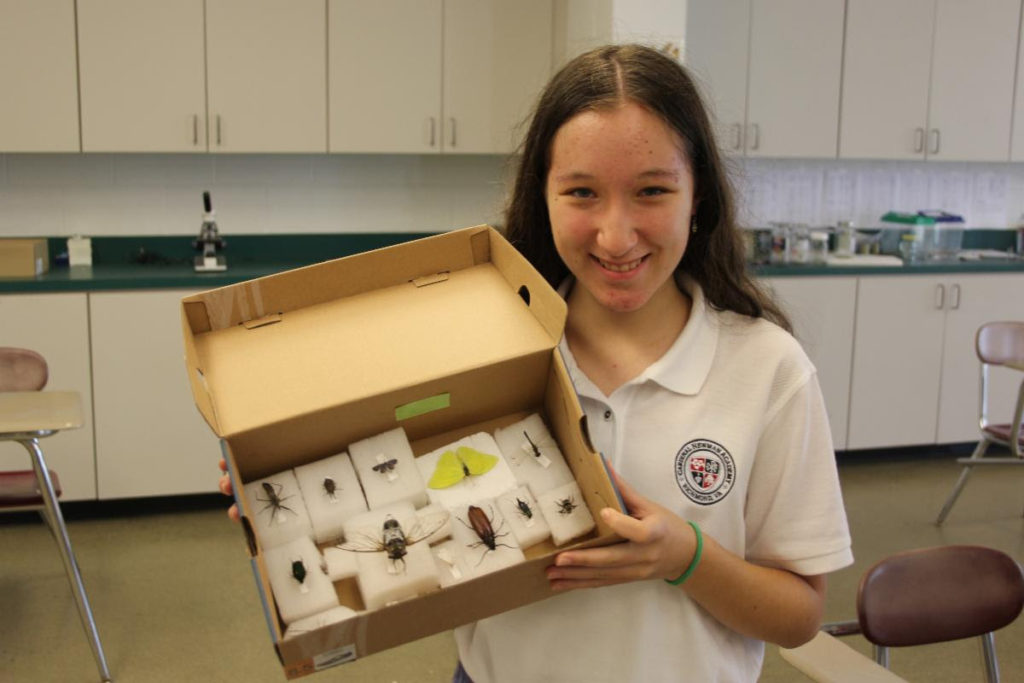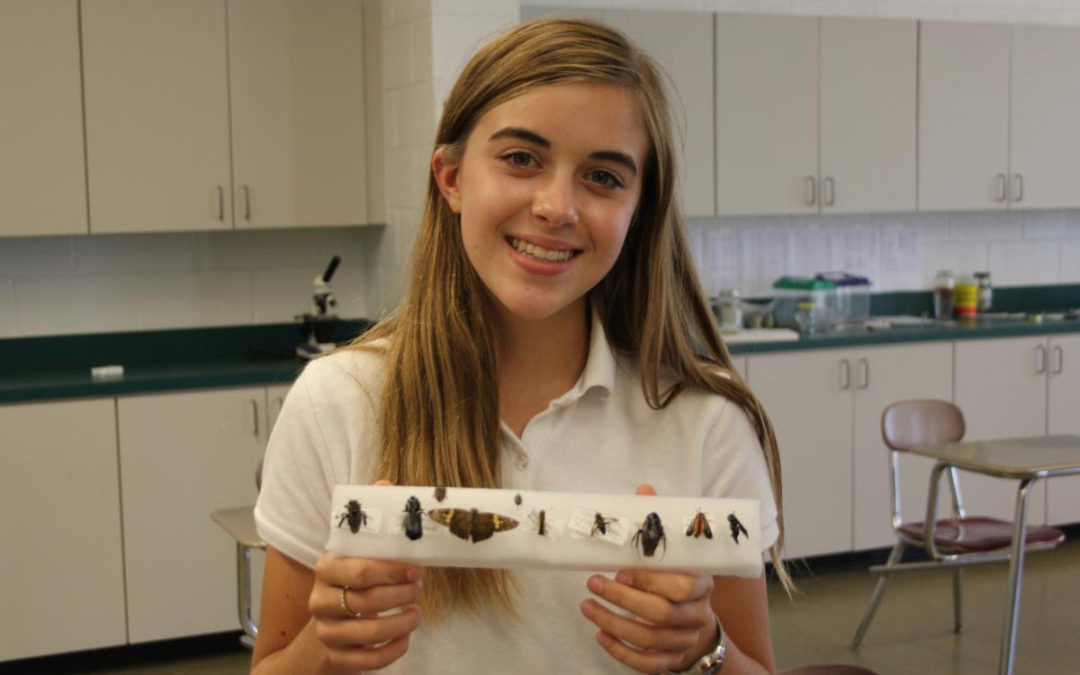Dear Friends,
During the first semester at Cardinal Newman Academy, each freshman put together an insect collection. I asked Mr Tito, our science teacher, why the students do this. Here is his answer:
“Consider the following: In the U.S., there are more than 25,000 species of beetles alone, in about 130 families. Each family differs considerably in its way of life but often only subtly in its appearance. For instance, certain beetles are ferocious predators, pouncing on prey with long-legged leaps, while others gorge on harmless sap or pollen. There are beetles that hunt from ambush like leopards and others that pursue prey in packs like wolves. The ladybird beetles are famous for eating garden aphids; the glow-worm beetles specialize in toxic millipedes. This is just a fraction of the diversity of beetles, themselves just one among a host of insect groups.

“How do we make sense of this? How do we learn about beetles? For the beginner the best way will be to focus on collecting and identifying whichever insects he happens to encounter. Once the insect is identified, the whole storehouse of knowledge about that creature is laid open, and not as abstract facts but as engrossing details about the life of a specific, relatable, individual creature.

A Freshman student shows off her impressive insect collection.
“Collecting insects is important because only the most unique insects can be identified to species level on sight. Field guides show just a fraction of the species; useful as they are, one never knows whether an insect isn’t a similar species not shown. Drawings and photos are a good tool, but insufficient for really learning the insects – even the most strikingly marked, supposedly distinctive insects are often mimicked by multiple unrelated insects from other families, and it is hard to get all of the details in a photo.
“Yellowjackets, for instance, are mimicked by certain longhorn beetles and many flower flies, all harmless and often quite common. The mimicry is good enough to have fooled some of our Cardinal Newman students – until they carefully examined a specimen. Ultimately, then, we are left with specimens as the most effective way to learn about insects in an engaging, hands-on, and accurate way.”

The great American teacher Mark Van Doren said a good teacher cultivates the memory, imagination, and observational powers of his students. It is not difficult to see how the collecting and classifying of insects directly nurtures all three of these important abilities that students will then use for difficult intellectual work. Further, catching and pinning insects directly taps into the students’ sense of wonder, that all-important part of the human person that questions what it encounters in an effort to grasp the truth.
Sincerely,

Stephen Fitzpatrick

